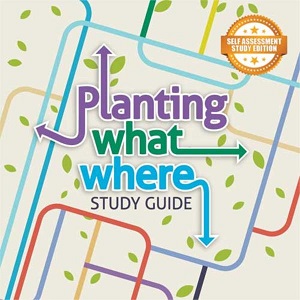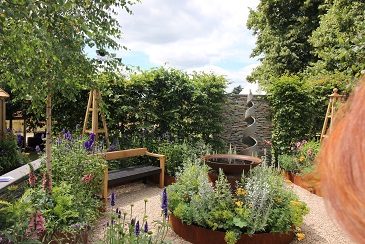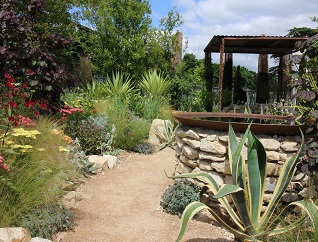
Sneak Peek
Plants are remarkable organisms. In nature they inhabit all sorts of places from arid deserts to windy mountain tops - they even grow in the sea. But when it comes to gardens, many people face problems getting plants to grow where they would like them to. Often this is due to a lack of understanding about the soil, the amount of sunlight, exposure to wind, the growth rate or ultimate size of the plant. Of course, there are other factors to consider too like the style of the garden and the location. This short course will help the avid gardener make the right choices when it comes to plant selection, and feel confident in what they are doing.
How Long Does the Course Take?
20 hours; but if you want to go deeper, you are able to. Complete it in a weekend if you wish; or spread it out over weeks or much longer. That's your choice. Once you enrol, you can study when you want, for as little or as long as you want, taking as long as you choose between study sessions
Support and Feedback
Self Assessment Tests are found throughout the course, where you will be asked questions and our course delivery system will give you immediate feedback.
A help desk is provided. Any questions or enquiries will be answered within one working day. Outside of weekends; often faster.
Course Lessons

There are Thirteen Lessons.
1. Plant Selection
2. Plant Establishment Methods
- Ways to help plants get established
- Techniques for planting sloped areas
- Planting arid sites
- Rehabilitating damaged soils in the home garden
3. Detecting Problems
- Pests
- Diseases
- First: conduct an inspection
- Second: take note of the environment
- Third: identify the problem
- Fourth: treat the problem
- Review what you have been learning
- Solutions for wet areas
- What can cause wet areas in your garden?
- Problems with wet areas
- Overcoming problems with boggy or wet areas
4. Plants for Wet/Boggy Sites
- How to keep the soil wet all year
- Plants that grow in permanently wet soil
- Plants that tolerate wet in winter and drier soil in summer
- Creating a bog garden
- Construction of water gardens
- Plants for water gardens
- Review what you have been learning
- Gardening in the Shade
- Ferns
5. Shade trees
- Deciduous or semi deciduous trees
- Evergreen shade trees
6. Windbreaks Hedges and Screens

7. Plants for Dry Gardens
- Gardening in dry condition
- Design and planting a fire break
8. Coastal Gardens
- Dealing with salt
- Creating wind breaks
- Hardy seaside plants
9. Trees and Shrubs
- Evergreen trees
- Cool conifers
- Deciduous trees for autumn colour
- Shrubs in the landscape
- Examples of long flowering plants
- Shrubs that flower in autumn
- What flowers in winterLiving Christmas trees
10. Fitting More in a Small Garden
- How to fit more in a small garden
- Small trouble free plants
- Space-saving decoration
- Go up
- Expand your garden
- Colours
- Design your garden to appear bigger
11. Plants for Various Situations
- Frost hardy plants
- Hardy plants for inner city gardens
- Plants for pets
- Long narrow areas
12. Lawns
- Choosing the right lawn
- Turf varieties
13. Living Garden Art
- Living art
- How to make a hedge
- Miniature/table top gardens
- Using junk in living gardens
Qualification at the End
After completing the lessons, you are presented with a major online exam; testing you on the content of the entire course.
You can attempt this whenever you feel ready; and upon getting 60% of the answers (or more) correct you are awarded with a "Certificate of Completion" bearing your name and the date, which can be downloaded as a pdf, saved and/or printed off.
How do our courses work?
- This is a self-guided course- you work through the course at your own time.
- Enrol any time. Your enrolment will be processed during business hours within a few hours.
- After your enrolment has been processed, you will receive an email explaining the course and how to access to the study guide, and our help desk. The guide contains both an audio and written explanation of how the course can be studied.
- Follow the study guide, read and undertake different learning tasks to broaden and deepen your understanding of the subject. These tasks can vary from practicals to research and more. You can select to do as many or as little as you like.
- If and when you need to; you can contact our academic staff via a help desk. Emails are answered during business hours.
- At the end of each lesson, you are presented with a series of automated self assessment questions, to review and reinforce your learning experience.
- Once you have completed all of the lessons, you are presented with a major online exam comprising lots of questions. The exam is assessed in our online training system once it has been submitted. If you achieve a result of 60% or more, you are given access to download a “Certificate of Completion” with your name, together with the current date and name of this short course.
- Everything is automatic, but if you do need help at any point along your journey of discovery there is a help desk, with real people who have real expertise –only an email away to help you out.
Who is this Course For?
This course can be equally valuable to both amateurs or
professionals. Good knowledge of what plants to grow where is rare
today. Many people just don't understand the implications of making poor
choices about the plants they use. Professional engineers, architects,
planners, developers, and sometimes even landscape professionals, are
often found to be planting species that will eventually damage pipes,
foundations or pavement; cause allergic reactions to people living
around them, or simply not grow well and die young. These and other
problems are common in urban and rural locations; residential,
commercial and industrial areas.
This course can set you on the path to a far greater awareness about plants and plant selection.
Ideal for:
- Amateur gardeners
- Professional horticulturists, nursery workers, gardeners
- Farmers and land managers
- Developers, engineers, architects and planners
- Anyone else who works with plants